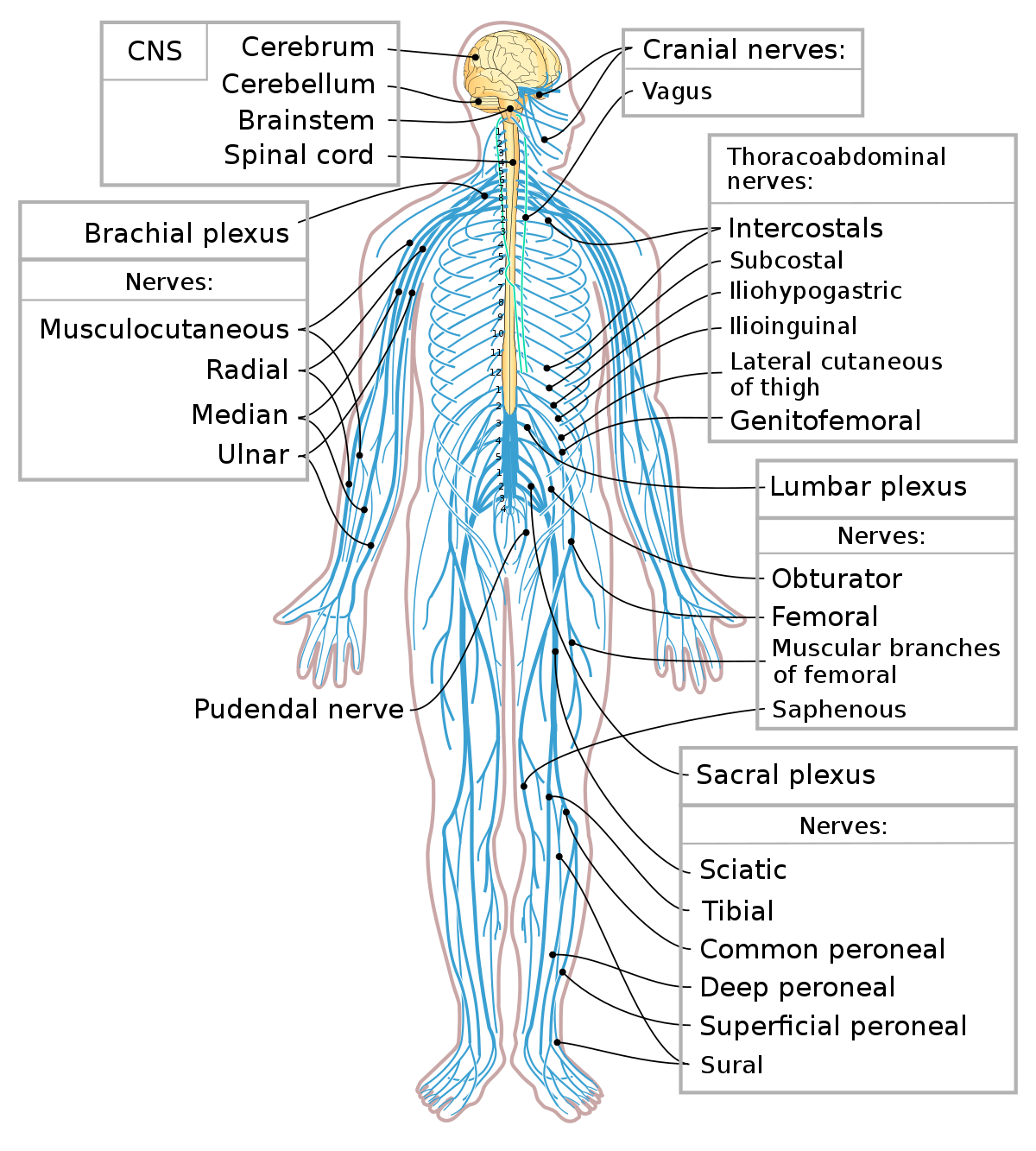Human Central Nervous System Diagram | Their specific functions include receiving stimuli from changes in the environment, transmitting. The neurons form the basic unit of the nervous system. Part of the central nervous system found in the skull. It controls all the body functions and senses. Diagram of the human nervous system (infographic).
The nervous system consists of the central and the peripheral nervous system. The central nervous system works by taking in the information collected by the peripheral nervous system and redistributing information based on that. Homeostasis — cells — integumentary — nervous — senses — muscular — blood — cardiovascular — immune — urinary — respiratory — gastrointestinal — nutrition — endocrine — reproduction (male) — reproduction (female). Human nervous system is mainly divided into 3 divisions, which are as follows: The cns is so named because the brain integrates the received information and coordinates and influences the activity of all parts of the bodies of bilaterally symmetric animals—i.e.

The conditions are controlled in two ways with chemical and nervous responses. Together with the peripheral nervous system (pns), the other major portion of the nervous system. The primary function of the central nervous system is integration and coordination. The central nervous system (cns), working in tandem with the peripheral nervous system (pns), allows the body to control and react to stimuli. It generates, modulates and transmits information in the human body. Human nervous system is mainly divided into 3 divisions, which are as follows: The nervous system, through the use of neurons, make human beings aware of their environment as well as their own bodily needs. How to draw human brain step by step for beginners ! Every day there are loads of the human brain is a complex tiny structure, weighing at just around 1.5 kg and having about 86 billion nerve cells. The central nervous system consists of the brain and the spinal cord. The human nervous system is an intricate network of nerves. The intricacies of the human nervous system are of great intellectual and practical interest and importance and are the. The nervous system consists of the central and the peripheral nervous system.
Find the perfect central nervous system diagram stock illustrations from getty images. This human anatomy clipart gallery offers 265 illustrations of the central nervous system, including external and dissected views of the brain and spinal cord. Their specific functions include receiving stimuli from changes in the environment, transmitting. This diagram shows the components of the central nervous system. Learn vocabulary, terms and more with flashcards, games and other study tools.

Part of the central nervous system found in the skull. Diagram of the human nervous system (infographic). In this article, we will look at the function, structure and clinical conditions associated with the central nervous system. The intricacies of the human nervous system are of great intellectual and practical interest and importance and are the. The central nervous system (cns) consists of the brain and the spinal cord, while the peripheral nervous system (pns) consists of sensory neurons this was an overview of the human nervous system function and structure along with a labeled diagram. I hope it helped you understand the. The neurons form the basic unit of the nervous system. There are about 86 billion nerve cells in the human brain. Together with the peripheral nervous system (pns), the other major portion of the nervous system. The cns, which comprises the brain and the spinal cord, has to process different types of incoming sensory information. The cns is so named because the brain integrates the received information and coordinates and influences the activity of all parts of the bodies of bilaterally symmetric animals—i.e. The central nervous system is ingeniously designed to respond to stimuli both internally and externally. Horizontal section of the head of the nervous system of vertebrates (including humans) is divided into the central nervous system (cns) and the.
There are about 86 billion nerve cells in the human brain. The diagram summarises how information flows from receptors to effectors in the nervous system. The control center. the central nervous system (cns) includes the brain and spinal cord (see figure below ). The nervous system enables humans to react to their surroundings and to coordinate their behaviour. The conditions are controlled in two ways with chemical and nervous responses.

These two extremely important organs make cognition, sensation, movement and other physiological functions possible. The nervous system forms the major communication and regulatory centre as well as the control unit. The cns contains about 86 billion nerve cells in total, this is more than 12x the. Nervous system, 2nd edition, provides a highly visual g. Homeostasis — cells — integumentary — nervous — senses — muscular — blood — cardiovascular — immune — urinary — respiratory — gastrointestinal — nutrition — endocrine — reproduction (male) — reproduction (female). The central nervous system consists of the brain and the spinal cord. The diagram summarises how information flows from receptors to effectors in the nervous system. The central nervous system (cns) is the part of the nervous system consisting primarily of the brain and spinal cord. Find the perfect central nervous system diagram stock illustrations from getty images. The divisions of the nervous system are displayed in the diagram It controls all the body functions and senses. The cns acts as the control center of the body by providing its processing. The central nervous system (cns), working in tandem with the peripheral nervous system (pns), allows the body to control and react to stimuli.
Human Central Nervous System Diagram: I hope it helped you understand the.
Post a Comment